The month of May generally means the end of star party season here in Florida, as schools let out in early June, and humid days make for thunderstorm-laden nights. This also meant that we weren’t about to miss the past rare clear weekend at Starkey Park. Jupiter and Venus rode high in the sky, and even fleeting Mercury and a fine pass of the Hubble Space Telescope over central Florida put in an appearance.
But the ‘star’ of the show was the planet Saturn as it appeared at nightfall low to the southeast. Currently rising about 9:00 PM local, Saturn is joining the evening skies as it approaches opposition next week.
This also means we’ve got every naked eye planet set for prime time evening viewing this week with the exception of Mars, which reaches solar conjunction on June 14, 2015. Mercury will be the first world to break this streak, as it descends into the twilight glare by mid-May.
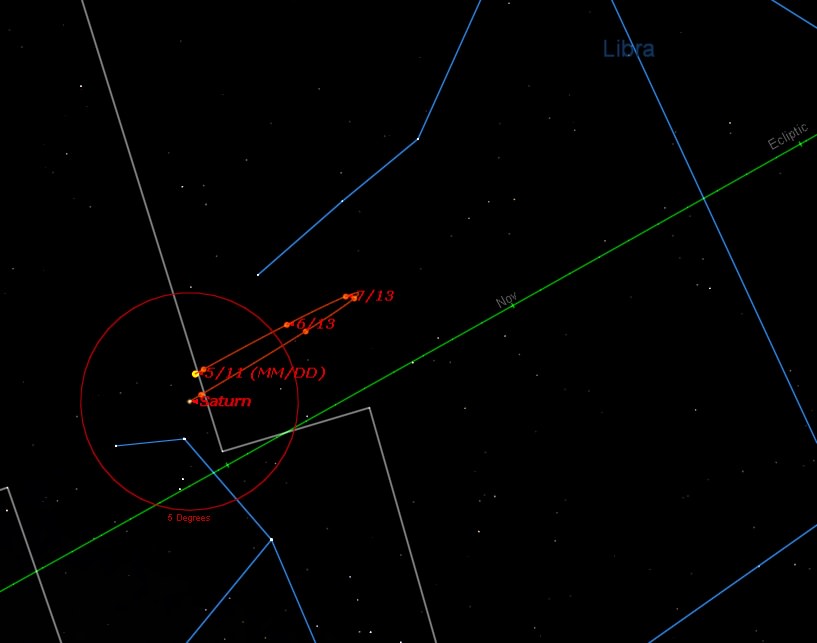
Saturn reaches opposition for 2015 on May 23rd at 1:00 Universal Time (UT), which equates to 9:00 PM EDT the evening prior on May 22 at nearly 9 astronomical units (AU) distant. Oppositions of Saturn are getting slightly more distant to the tune of 10 million kilometers in 2015 versus last year as Saturn heads towards aphelion in 2018. Saturn crosses eastward from the astronomical constellation of Scorpius in the first week of May, and spends most of the remainder of 2015 in Libra before looping back into the Scorpion in mid-October. The first of June finds Saturn just over a degree southward of the +4th magnitude star Theta Librae. Saturn takes nearly 30 Earth years to complete one orbit, meaning that it was right around the same position in the sky in 1985, and will appear so again in 2045. Relatively speedy Jupiter also overtakes Saturn as seen from the Earth about once every 20 years, as it last did on 2000 and is set to do so again in 2020.
And though series of occultations of Saturn by the Moon wrapped up in 2014 and won’t resume again until December 9, 2018, there’s also a good chance to spy Saturn two degrees away from the daytime Moon with binoculars on June 1st just 24 hours prior to Full:
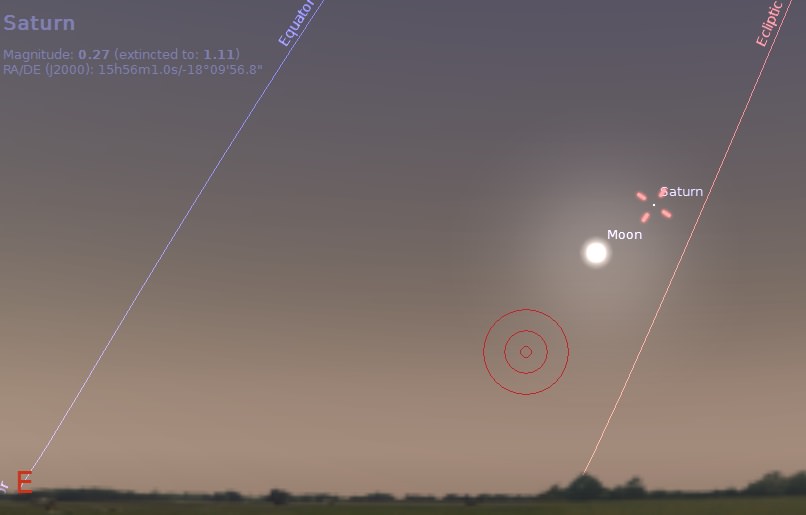
The tilt of the rings of Saturn is also slowly widening from our Earthbound perspective. At opposition, Saturn’s rings subtend 43” across, and the ochre disk of Saturn itself spans 19”. Incidentally, on a good pass, the International Station has a visual span roughly equivalent to Saturn plus rings. In 2015, the rings are tilted 24 degrees wide and headed for a maximum approaching 27 degrees in 2017. The rings appeared edge on in 2009 and will do so again in 2025.
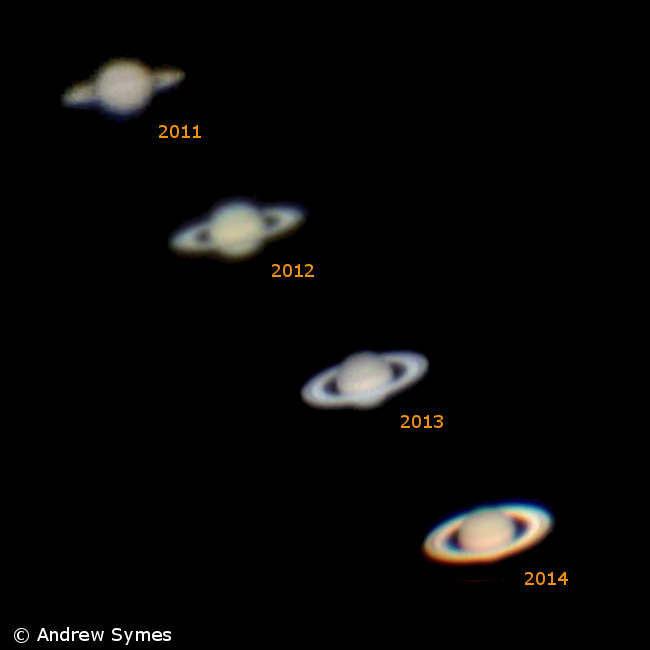
Also, keep an eye out for the Seeliger effect. Also sometimes referred to as the ‘opposition surge,’ this is a retroreflector-style effect that causes an outer planet to brighten up substantially on the days approaching opposition. In the case of Saturn and its rings, this effect can be especially dramatic. Not only is the disk of Saturn and the billions of icy snowballs casting shadows nearly straight back as seen from our vantage point near opposition, but a phenomenon known as coherent backscatter serves to increase the collective brightness of Saturn as well. You see the same effect at work as you drive down the Interstate at night, and highway signs and retroreflector markers down the center of the road bounce your high-beams back at you.

We’ve seen some pretty nifty image comparisons demonstrating the Seeliger effect on Saturn, but as of yet, we haven’t seen an animation of the same. Certainly, such a feat is well within the capacities of amateur astronomers out there… hey, we’re just throwing that possibility out into the universe.
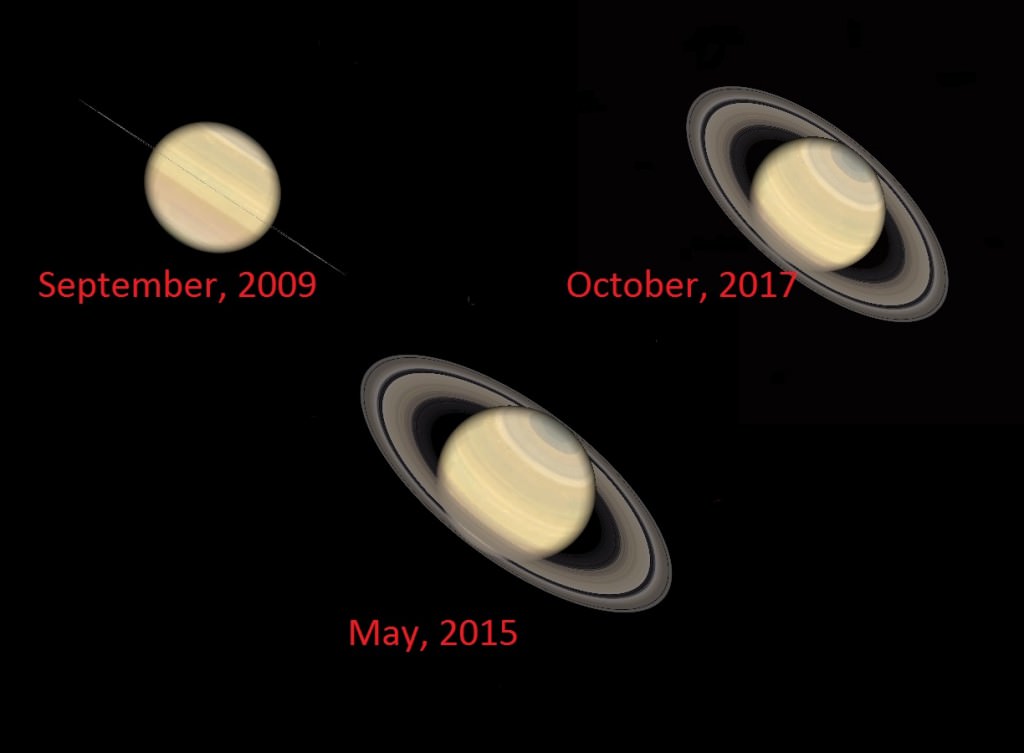
Through a small telescope, the moons of Saturn become readily apparent. The brightest of them all is Titan at magnitude +9, orbiting Saturn once every 16 days. Discovered by Dutch astronomer Christiaan Huygens on March 25, 1655 using a 63 millimeter refractor with an amazing 337 centimeter focal length, Titan would easily be a planet in its own right were it directly orbiting the Sun. Titan also marks the most distant landing of a spacecraft ever carried out by our species, with the descent of the European Space Agency’s Huygens lander on January 14, 2005. Huygens hitched a ride to Saturn aboard NASA’s Cassini spacecraft, which is slated to end its mission with a destructive reentry over the skies of Saturn in 2017. Saturn has 62 known moons in all, and Enceladus, Mimas, Tethys, Dione, Rhea and two-faced Iapetus are all visible from a backyard telescope.
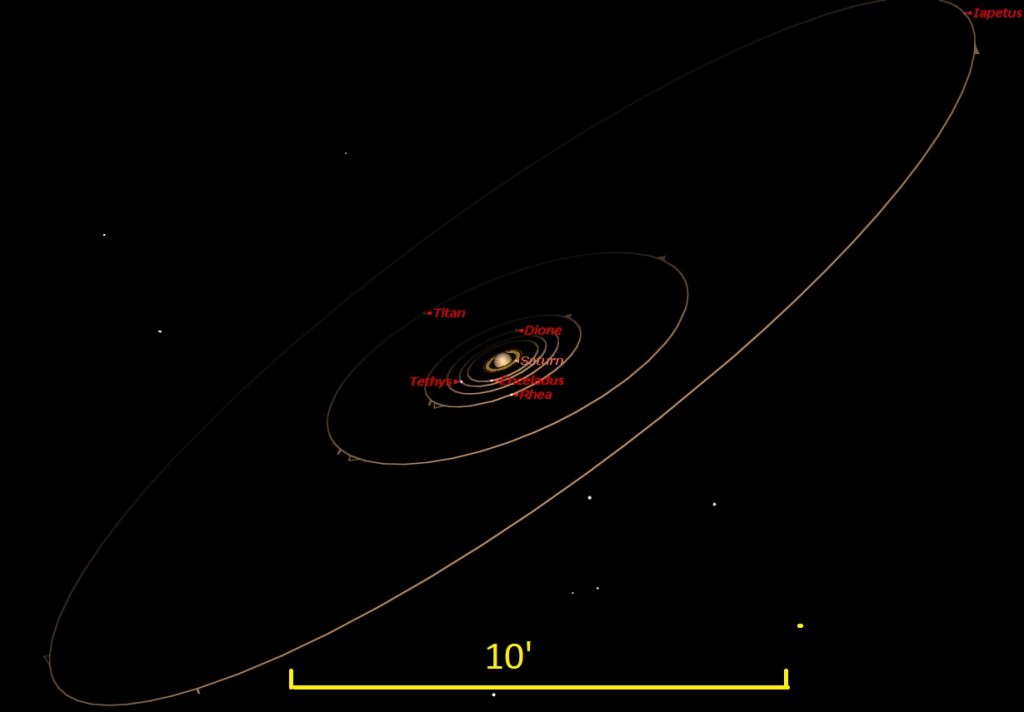
You can check out the current position of Saturn’s major moons (excluding Iapetus) here.
And speaking of Iapetus, the outer moon would make a fine Saturn-viewing vantage point, as it is the only major moon with an inclined orbit out of the ring plane of Saturn:
Expect our Saturn observing resort to open there one day soon.
Up for a challenge? Standard features to watch for include: the shadow of the rings on the planet, and the shadow of the planet across the rings, as well as the Cassini division between the A and B ring… but can you see the disk of the planet through the gap? High magnification and steady seeing are your friends in this feat of visual athletics… catching sight of it definitely adds a three dimensional quality to the overall view.
Let ‘the season of Saturn 2015’ begin!

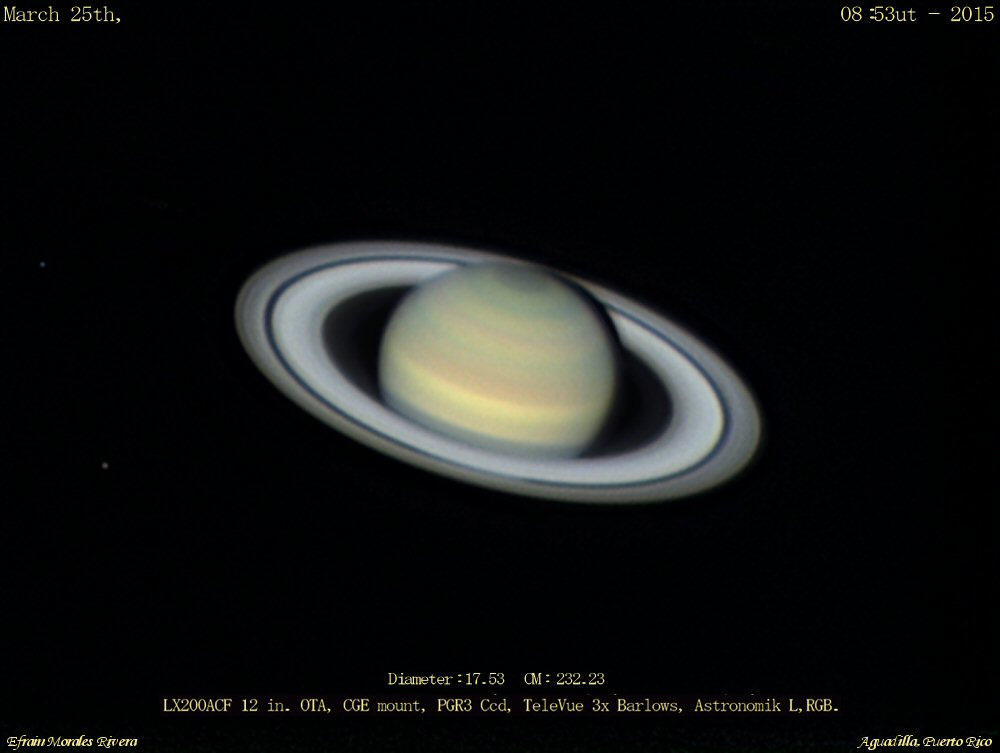
Whenever I see a picture such as the first, it reminds me of my first telescope where I introduced my family to the sky.
After setting up the scope, I moved away, accidently tapping it, causing the scope to wobble slightly in an elipticle motion … creating a ring of Saturn …
Silly memory, but a good one none the less.
Very cool… views of Saturn with my 60mm refractor as a kid were memorable as well. We’re lucky to have such a photogenic planet in our solar system!